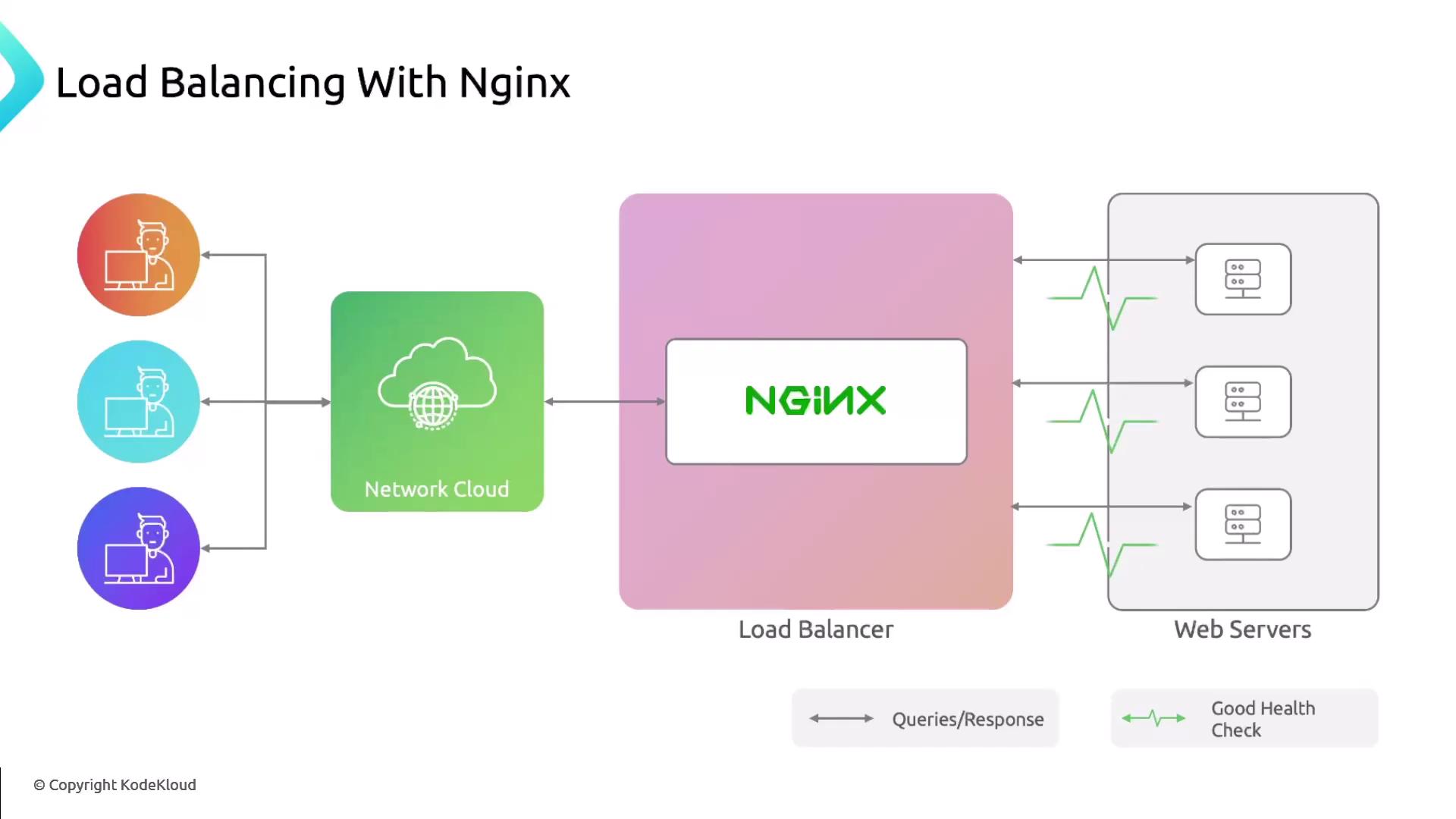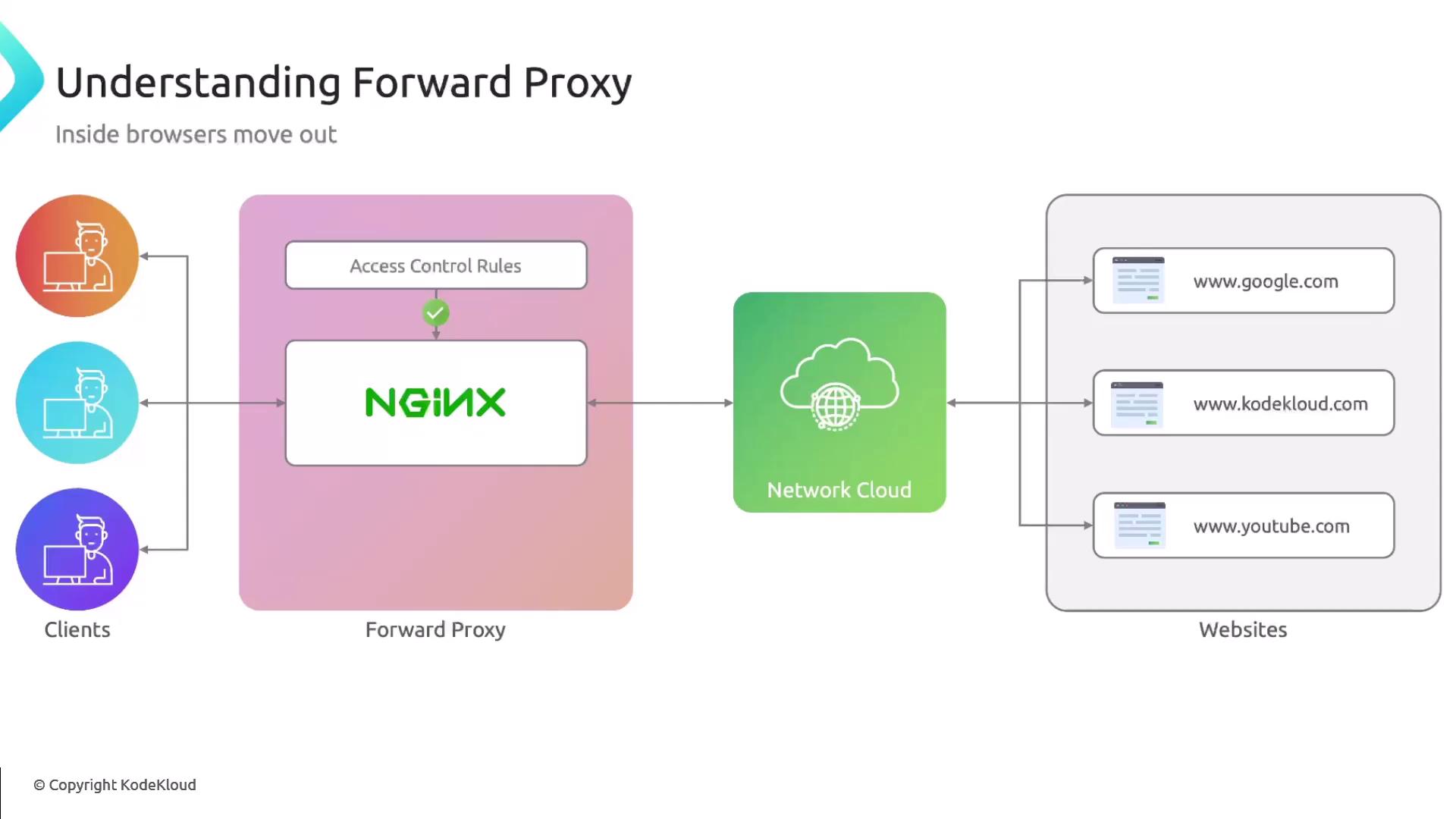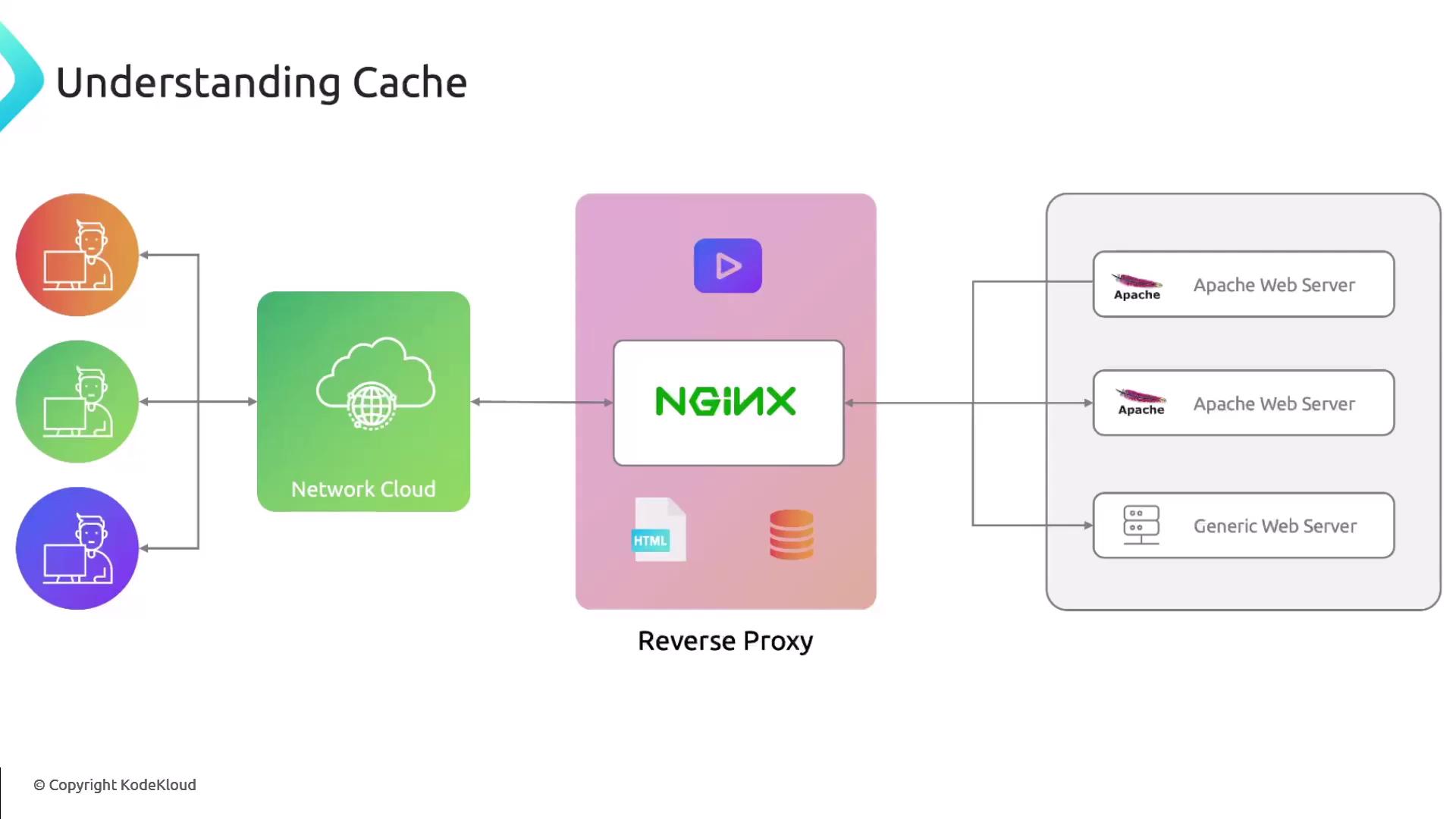Nginx For Beginners
Introduction
Nginx Use Cases
Nginx is more than a high-performance web server. It can improve your architecture by acting as a load balancer, reverse proxy, forward proxy, or caching layer—boosting scalability, reducing latency, and enhancing security.
Key benefits include:
- Distributing requests for high availability
- Offloading SSL/TLS and request routing
- Caching responses to cut backend load
- Controlling outbound traffic and anonymizing clients
Explore each use case below, complete with configuration examples, diagrams, and best practices.
Load Balancing
By distributing incoming requests across multiple servers, Nginx prevents any single backend from becoming a bottleneck. You declare an upstream block listing your servers, then proxy traffic to it.
upstream backend {
server backend1.example.com;
server backend2.example.com max_fails=3 fail_timeout=30s;
}
server {
listen 80;
location / {
proxy_pass http://backend;
}
}
Note
Nginx supports multiple algorithms including round_robin (default), least_conn, and ip_hash. Choose one based on your workload characteristics.

Reverse Proxy
A reverse proxy accepts client requests, applies routing or SSL offloading, then forwards them to one or more backend servers. This hides your infrastructure behind a single public endpoint.
server {
listen 443 ssl;
server_name example.com;
ssl_certificate /etc/nginx/ssl/example.crt;
ssl_certificate_key /etc/nginx/ssl/example.key;
location / {
proxy_pass http://internal_app;
proxy_set_header Host $host;
proxy_set_header X-Real-IP $remote_addr;
}
}

Load Balancer vs. Reverse Proxy
| Feature | Load Balancer | Reverse Proxy |
|---|---|---|
| Primary Role | Distribute traffic across servers | Intercept and forward requests |
| Backend Servers | Requires two or more | Can work with a single server |
| Common Use Cases | Scaling, failover, health checks | SSL/TLS termination, path-based routing |
Forward Proxy
A forward proxy sits between clients and the internet, filtering or anonymizing outbound requests. Configure Nginx to restrict sites or mask client IPs for privacy.
server {
listen 3128;
resolver 8.8.8.8;
proxy_pass_request_headers on;
location / {
proxy_pass $scheme://$http_host$request_uri;
proxy_hide_header Proxy-Authorization;
}
}
Warning
Opening a forward proxy to the public can lead to abuse. Always secure it with allow/deny or authentication mechanisms.

Caching
Caching with Nginx reduces response times and eases load on backend services. Define a cache zone, set key parameters, and control how responses are stored.
proxy_cache_path /var/cache/nginx levels=1:2 keys_zone=my_cache:10m
inactive=60m max_size=1g;
server {
listen 80;
location / {
proxy_cache my_cache;
proxy_pass http://backend;
proxy_cache_valid 200 302 10m;
proxy_cache_valid 404 1m;
}
}
Note
Monitor cache usage and tune inactive and max_size to avoid running out of disk space. Use proxy_cache_bypass for selective caching.

Links and References
- Nginx Official Documentation
- HTTP Load Balancing with Nginx
- Using Nginx as a Forward Proxy
- Caching Guide in Nginx
Watch Video
Watch video content